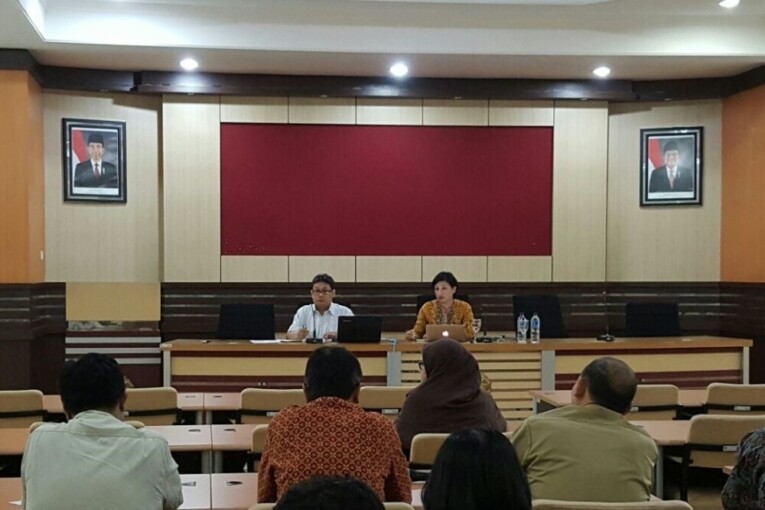
Presently, only 20% of upper class families can afford a home from formal market, 40% of middle class cannot afford one without a subsidy, and 40% lower class cannot even afford one. This shows the unequal distribution of housing in Indonesia, showing that this has not become a priority of concerns for central and local governments.
Thus was said by Dr. Ir. Mahditia Paramita, M.Sc, founder and executive director of Housing Resource Center initiated in 2006 by housing activists, Yogyakarta local government, UN-Habitat, and Public Works and Housing Ministry. “Budgeting for housing sector is relatively small compared to others, meaning it is not a priority yet for governments,” she said during Policy Corner event hosted by UGM Centre for Demography and Policy Studies on Monday (28/3) in Auditorium of Masri Singarimbun hall.
In the discussion she told the story of transformation in housing policy in Indonesia for 6 generations: introduction from years 1947-1966 with priority on physical planning after World War II, development 1967-1977 during economic crisis that sharply decreased people’s purchase power, stability 1978-1997: development acceleration through housing regulations and agencies, transition 1998-2004: from centralisation to decentralisation system, revision to policy I: optimalisation of local governments in housing policy, revision to policy II from 2010 till now that orientates at synergy and sustainable development.
Even so, Mahtidia appreciated increased attention from government on this issue, including the handling of slums by aid donations. “The program to assist poor people in having a home has showed a significant progress as seen in the optimalisation of decentralisation in housing issues. The role of local government and society directly can increase the effectivity and transparency of the program,” she said.

